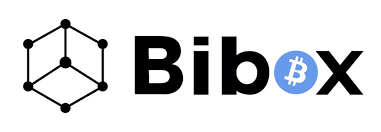Zilliqa is another competitor to Ethereum, a platform that allows you to send P2P payments and build decentralized applications. This coin came about as a result of the launch of a project by a group of scientists at the National University of Singapore in 2016. At the heart of the research and experiments was the problem of scalability, to which the founders approached the solution in a non-standard way. For the first time, a digital coin was based on sharding technology, which will be described in detail below.

It is noteworthy that before the launch of the ICO, the team created a fully working blockchain, which was tested for almost two years. Zilliqa cryptocurrency was created on the Ethereum blockchain as an ERC-20 token, and a total of 21 billion ZIL were issued. The Zilliqa ICO lasted only nine days, during which the team was able to achieve the set hard cap of $ 22 million. Participants had to go through the KYC procedure. The size of the minimum and maximum investments was also set, 2 ETH and 5 ETH, respectively.
Zilliqa Cryptocurrency Distribution
Tokens were distributed as follows:
- 40% – remuneration for miners;
- 30% – to crowd sale participants;
- 30% – reserve for the company and developers
Besides, the developers have published a plan for using the funds raised:
- 80% – development of the platform and ensuring its performance;
- 15% – Anquan Capital Pte. Ltd., the company which developed sharding, the technology behind Zilliqa;
- 5% – to the founders and funders of the project.
From the very beginning, the Zilliqa cryptocurrency was perceived by the community as a promising and innovative token, as evidenced by its addition to the largest exchange Huobi 20 days after the completion of the ICO. And users were not mistaken in their trust in the project, because in February 2018, i.e. a month after the end of the crowd sale, the code of the first test version of the Zilliqa v0.1 platform called Durian was published on GitHub. In it, it was possible to use the block explorer in the Zilliqa blockchain, as well as send transactions through a web wallet.
Zilliqa Team
The Zilliqa team is mainly composed of PhDs in Computer Science with an academic background:
Xinshu Dong – General Manager. Before launching Zilliqa, he worked as a leading cybersecurity expert on government projects.
Prateek Saxena is Chief Scientific Advisor. He received his Ph.D. from the University of California, Berkeley. He is now an honorary professor of computer science at the National University of Singapore. In the past, he was the founder and CEO of the Kyber Network project.
Besides, the impressive composition of advisors speaks about the seriousness of the project’s intentions:
- Loi Luu – Co-founder of Kyber Network;
- Vincent Zhou – Founding Partner of FBG Capital;
- Nicolai Oster – partner of Bitcoin Suisse AG;
- Alexander Lipton is the CEO of StrongHold Labs.
Zilliqa’s advantages and disadvantages
Of course, the Zilliqa cryptocurrency is a unique coin, so it has several advantages that are not inherent in other coins:
- Effective solution for network scalability – Developers were the first to use sharding technology to increase transaction processing speed. Besides, according to the results of the experiment, this indicator grows exponentially in the number of nodes in the network.
- The energy efficiency of mining – PoW is used only to verify data about nodes, consensus in the blockchain is achieved through the protocol of the practical Byzantine paradigm of fault tolerance. Thus, the verification of transactions and the creation of new blocks do not require a large number of energy resources, as is, for example, relevant for bitcoin.
- Strong team – the Zilliqa project is the development of scientists from the University of Singapore, and this already says something. Besides, the management team includes specialists who have received doctoral degrees from the world’s leading universities.
- The longevity of the project – the Zilliqa blockchain was launched two years before the ICO, and this is a strong argument in favor of the seriousness of the developers’ intentions against the backdrop of the many “fly-by-night projects” that have flooded the crypto sphere today.
There are no obvious flaws in Zilliqa. The only thing that can be called here is the transfer of the launch of the main network. Initially, the developers planned to do this in mid-2018, then postponed it to the end of 2018, but judging by the latest statements from the team, the long-awaited launch will finally take place in the first quarter of 2019.
The effectiveness of the developed technology in the Zilliqa mainnet is also questionable since the positive results of the network’s ability to achieve high scalability were obtained after experiments on a test network powered by Ethereum.











